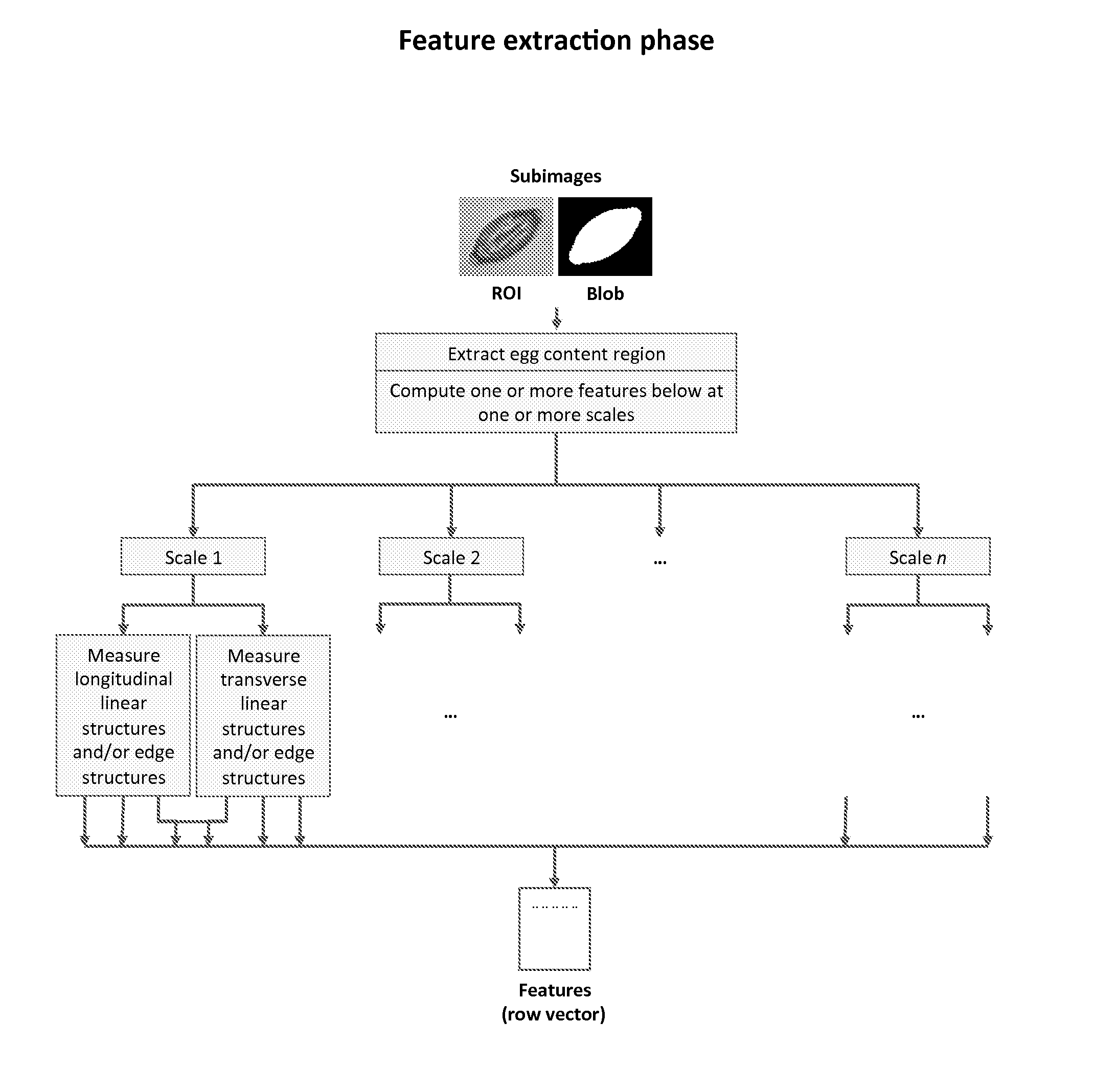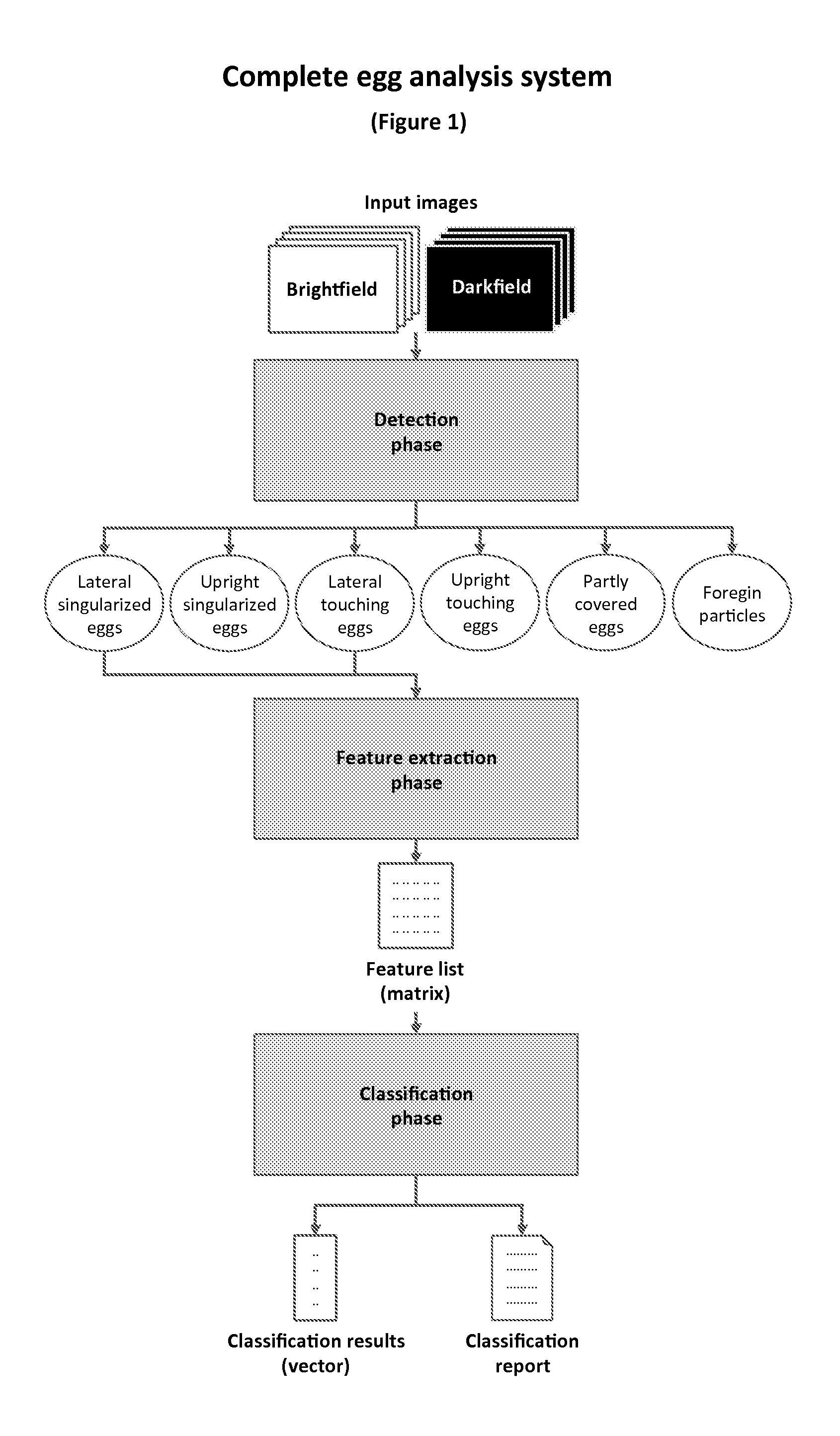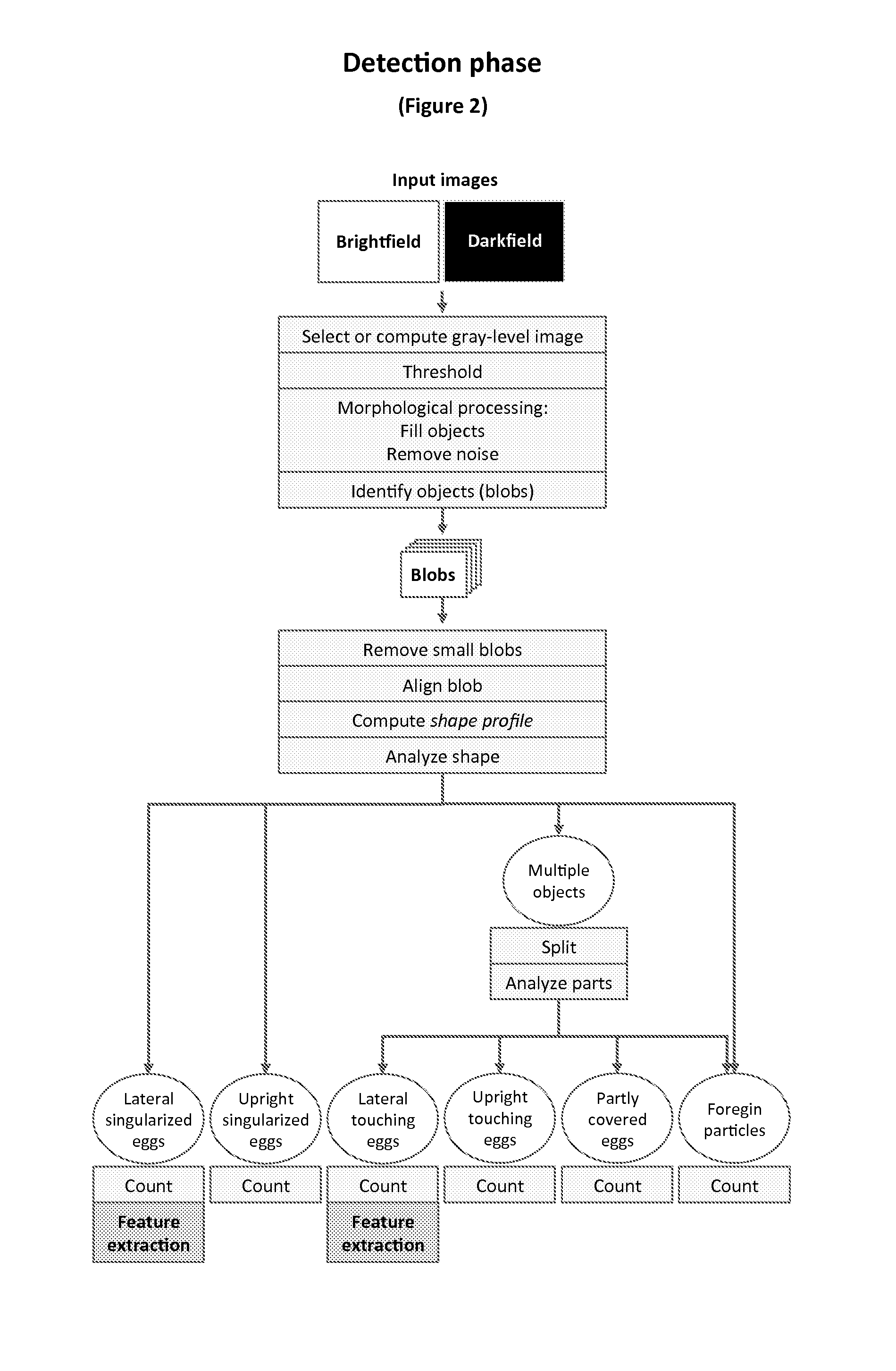Computer Vision Based Method for Extracting Features Relating to the Developmental Stages of Trichuris Spp. Eggs
a technology of computer vision and eggs, applied in the field of computer vision based method for extracting features relating to the developmental stages of trichuris spp. eggs, can solve the problems of inability to use the applicative stage, larvae in the egg may not be fully developed, and the inability to establish in the intestin
- Summary
- Abstract
- Description
- Claims
- Application Information
AI Technical Summary
Benefits of technology
Problems solved by technology
Method used
Image
Examples
example 1
Features Based on Spatial Autocorrelation
[0114]The idea behind these features is to measures of the longitudinal and transverse structures of the egg contents using spatial autocorrelation of the egg contents in the longitudinal and transverse direction. The longitudinal and transverse spatial autocorrelation coefficients of the egg contents are computed in the following way:
[0115]The egg subimages are aligned with the image axes and the egg content region is extracted as described above. The extracted egg content region is then downscaled to a resolution of approximately 1.4 pixels per micrometer for eggs around 60 μm in length.
[0116]The resulting downscaled egg content image, denoted I, will form the basis of the spatial autocorrelation computations, which are explained in the following.
[0117]Three copies are made of I called I1, I2, and I3. From I1, the last row and the last column of pixels are discarded (cropped away). For I2, the first row and the last column of pixels are dis...
example 2
Features Based on Edge Detection
[0123]The egg subimages are aligned with the image axes and the egg content region is extracted as described above. The extracted egg content region is then downscaled to a resolution of approximately 2.8 pixels per micrometer for eggs around 60 μm in length.
[0124]The Canny edge detector is applied to the downscaled egg content region in order to locate and measure the prevalent edges of the egg contents. The standard deviation of the Gaussian filter is set to 1, and the high and low sensitivity thresholds are set to 0.15 and 0.05, respectively, although an automatic, heuristic determination of these could be used as well.
[0125]The intermediate horizontal and vertical filter responses of the edge detector are used to compute the orientation of the detected prevalent edges. This is done using the default formula as seen in equation (10.2-11) of.
[0126]A possible quantification of the measured edge structures is to compute a ‘longitudinal edge count’ and...
classification example 1
Classification Based on the Canny Features
[0140]The presented Canny edge detection based feature resulted in two quantities; the longitudinal edge count and the transverse edge count. Besides using them separately as features, the ratio could be used as a feature as well.
[0141]Let the ‘edge count ratio’ be defined as the longitudinal edge count divided by the transverse edge count. A possible classification based on this feature alone is to use a single threshold value as classifier, for instance the value 1.8. All eggs with an edge count ratio above 1.8 are classified as containing a larva and the remaining are classified as not containing a larva. A graph of the edge count ratios of 100 eggs, presented in descending order, is seen on FIG. 13(a). Notice that for a threshold of 1.8, only a single egg out of the 100 is misclassified based on this edge count ratio feature alone.
[0142]Another way to classify the eggs is to use the longitudinal and transverse edge counts as two separate...
PUM
 Login to View More
Login to View More Abstract
Description
Claims
Application Information
 Login to View More
Login to View More - R&D
- Intellectual Property
- Life Sciences
- Materials
- Tech Scout
- Unparalleled Data Quality
- Higher Quality Content
- 60% Fewer Hallucinations
Browse by: Latest US Patents, China's latest patents, Technical Efficacy Thesaurus, Application Domain, Technology Topic, Popular Technical Reports.
© 2025 PatSnap. All rights reserved.Legal|Privacy policy|Modern Slavery Act Transparency Statement|Sitemap|About US| Contact US: help@patsnap.com



